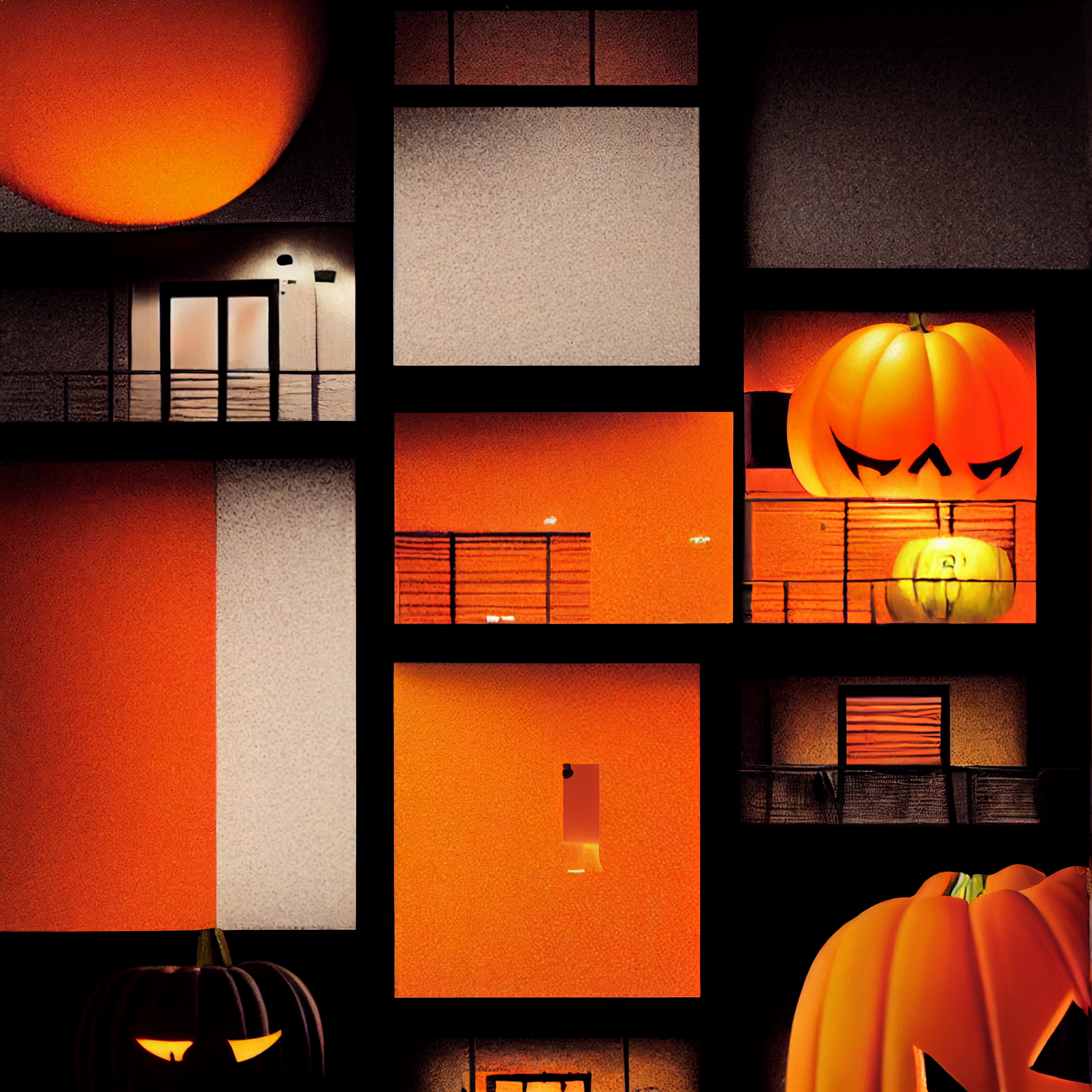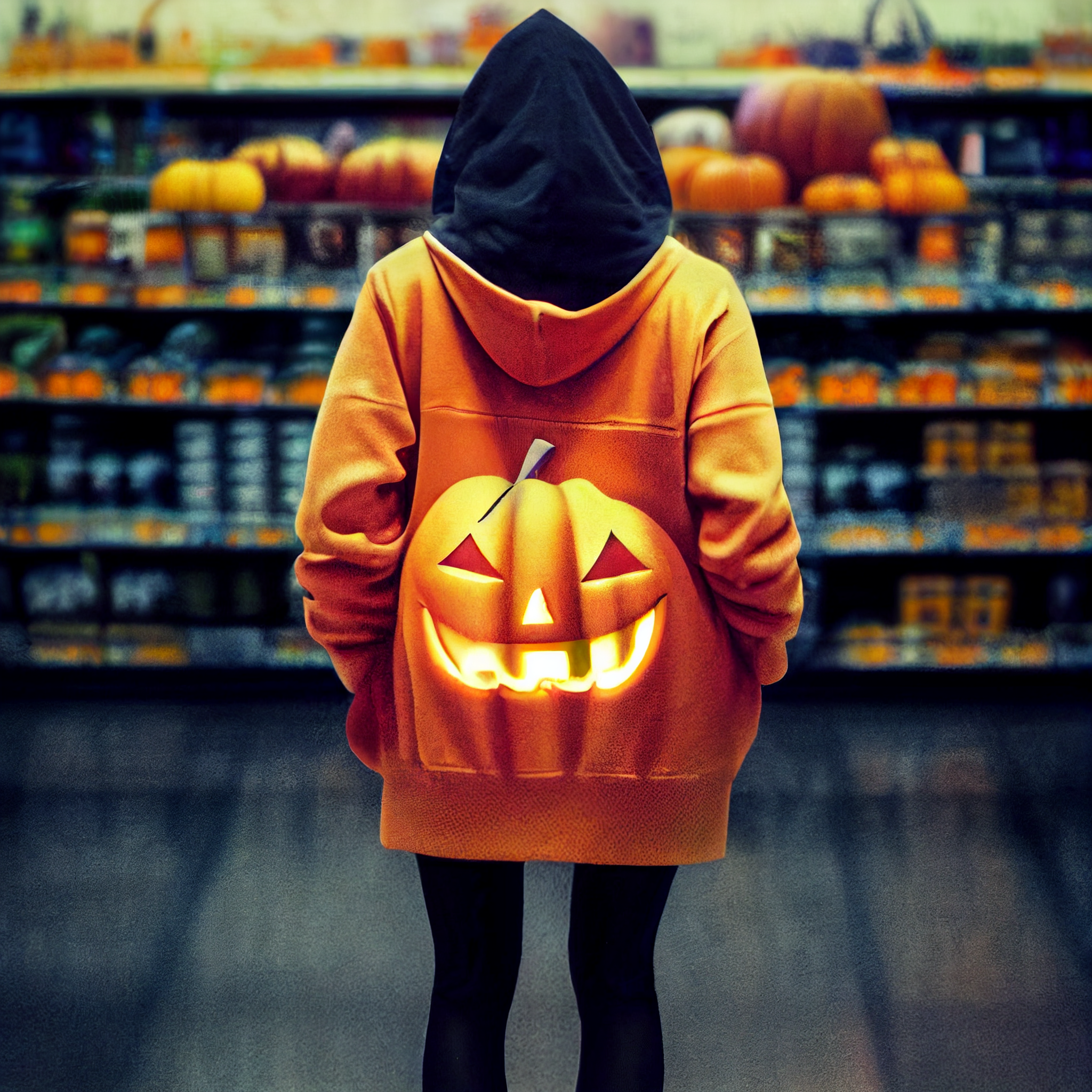Halloween: Past, Present, Future

When I was a child, Halloween was a happy time. The day itself was a bounty of excitements, ending with me and my brother watching cartoons and gorging on the best candies (the chewy ones, the crunchy ones coated in chocolate). As we got older, we realized that if we hid our pillowcases of candy at the end of the night, our parents would forget they existed.
My pillowcase of candy became a secret stash, a source of sugar whenever I wanted it, a way to sidestep my mom’s limits on sweets. Since then, I’ve become addicted to sugar. Or, another way of looking at it: since then, sugar has brought me many joys.
Consumerism is an ideology of happiness. It offers many joys, not the least through its most spooky disciple: Halloween is a $10 billion dollar industry, overflowing with plastic decorations, rubber masks, polyester capes, individually-wrapped candies—and that $10 billion doesn’t include entertainment, films, TV shows, video games, the accompanying merchandise, billions of dollars of human labor, microprocessors, screens—
I heard once that happiness exists in the present, while meaning bridges past, present and future. This makes sense, since as many wisdom traditions teach, happiness can only be found in a full and total immersion in the present moment.
Happiness exists in the now, and the past and future can only jeopardize it—best not to think where that rubber, polyester, chocolate, corn syrup, plastic and cobalt came from, or where it’s going. To be happy, one must be fully present in the moment of consumption—a sweet taste, a thrilling scare, a rush of pleasure at someone’s clever costume.
Meaning, however, is a bridging of past, present, future—and it’s hard to shake. It’s always butting in, impinging on the present, undermining its joy, urging it to subordinate itself. The only way for the present to maintain dominance is through more joy, greater joys, heedless joys, reckless joys, joys destructive of what was and is to come.
Halloween’s embrace of American consumerism is relatively new: the holiday began long ago and far away, illuminated by a very different philosophy.
Samhain was an ancient Celtic festival focused on the dead. Celebrants would don costumes to channel ancestors or ancient Gods, and in that guise go door-to-door, offering prophesies of the future.
There’s something strange in that: why are the dead suited to soothsaying? Aren’t they beings of the past, farther than the future, even, than those of us alive in the present?
But maybe the present can blind us. Maybe those removed from life can can see further than those of us preoccupied with the joys and travails of the now.
During Samhain, the normal rhythm of life was disrupted, as hearth fires would be put out in favor of a central bonfire, where animal sacrifices were carried out. Death was invited in as a way to make meaning: the animals dying tonight, the ancestors dead long ago, our own deaths, always hovering at the edge of prophesy.
Studies show that meaning and happiness tend to be in tension. In a 2015 study, subjects journaled over the course of a semester. Researchers measured frequency of words associated with positive emotionality (‘smile,’ ‘happy’). The study found that day-to-day postive emotionality was, “quite unexpectedly, negatively correlated with optimism and positively correlated with emotion suppression at follow-up.” The researchers suggested, “there may be at times a trade-off between seeking happiness and meaning in life, as well as a reversal in the outcomes associated with happiness and meaning-making over the long term.”
By the 19th century, Celtic culture had receded from British life. But in Ireland, Samhain still practiced, though by then it was called “All Hallows Eve,” and considered a Roman Catholic holiday.

19th century England was a highly consumerist society, whose people enjoyed colorful textiles, flavorful teas, and rich food. Then as now, those basking in the delights of these wonderful products took care not to dwell on where they came from.
Much of the food came from Ireland. The island was controlled by English landowners, who demanded that most of the land be used to raise cattle and other expensive foods for export to the English. The Irish were forced to farm on small parcels of poor land, and survived off the fast-growing potato. And when the potato blight swept Europe, the Irish starved. Over a million people died in the Great Potato Famine, one of the worst in human history, and the island was overrun with death. Millions more fled, most coming to America.
This wave of Irish migration changed the course of human history. For one, it brought us Halloween. The children of these Irish immigrants carried on the rituals of Samhain, going door-to-door in costumes and begging for treats. This practice caught on, and soon Americans of all backgrounds were celebrating the holiday. Early Halloween even preserved the prophesy aspect, with young women attempting to divine the names of their future husbands with apple parings and yarn.
Today, Halloween is an international holiday and a thriving industry, but Halloween attained this status through something of a Faustian bargain. First, Halloween shed its connection to the past—few know of the holiday’s links to the Irish, and even fewer have heard of Samhain. The focus on ancestors has also receded, with the mythology of Halloween focusing instead on cartoonish monsters from an imaginary present. Halloween has also shed its links to the future, the prophesy element long gone. And finally, while Halloween still maintains its connection to death, it tends to relegate it to farce and fantasy. Or perhaps death will rear its head philosophically, not to build meaning, but to destroy it: why not, when we’re all going to die anyway?
How might Halloween be different, if we brought back some of these older elements? Might we go door-to-door dressed as ancestors, offering prophesies? Might we offer homemade food to those who knock, instead of outsourcing our trust to malevolent corporations and tiny plastic walls? Might we recount the tale of migration which brought us Halloween, mourning the victims of consumerism, past, present and future? Might we consider America’s admirable role in the episode, the millions she welcomed in, instead of basking in the terrible American habit of consumerist excess?
The only way to find out is to rise above the present moment, no matter how sweet it might be.
Arielle is a writer and editor based in Mexico, Canada and the US. More of her writing can be found here.

